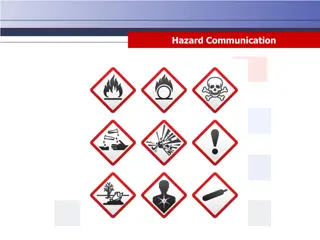Avian Hazard Advisory System (AHAS) Update
The latest updates to the Avian Hazard Advisory System (AHAS) providing crucial bird hazard information for flight safety. Learn about calculating NEXRAD risk, regional mosaics, flying areas, and risk management.
Download Presentation

Please find below an Image/Link to download the presentation.
The content on the website is provided AS IS for your information and personal use only. It may not be sold, licensed, or shared on other websites without obtaining consent from the author.If you encounter any issues during the download, it is possible that the publisher has removed the file from their server.
You are allowed to download the files provided on this website for personal or commercial use, subject to the condition that they are used lawfully. All files are the property of their respective owners.
The content on the website is provided AS IS for your information and personal use only. It may not be sold, licensed, or shared on other websites without obtaining consent from the author.
E N D
Presentation Transcript
AVIAN HAZARD ADVISORY SYSTEM (AHAS) Web Page Update
EXTRACTION After the mosaics are created, the percentage of the polygon that has biological activity and the average dBZ value of the NEXRAD return are extracted for each flying area.
NEXBAM vs BAM The old BAM is based on bird observations made twice a year, largely of birds on the ground! The BAM based on NEXRAD data (NEXBAM) is based on actual biomass in the air detected by radar. The daily chronology in the BAM was a guestimate. The NEXBAM comes from up to 10 NEXRAD volume scans every hour for five years. The BAM, being two annual data points interpolated over time, cannot determine the changes in seasonal chronology with climate change. Winter seasons for birds are now shorter than they used to be. NEXBAM observations are seasonally accurate and consistent with recent trends. NEXBAM updates every month with the last months data. Data older than 5 years is removed. The old BAM was created in the 80's and has never been updated. The BAM risk could not easily be made consistent with the NEXRAD risk. They now have a common scale based on the dBZ from the radar and the percentage of the polygon with biological activity. NEXBAM and AHAS live risk are equivalent. The old BAM could only be seen via the map page. And the time periods displayed were broad. The graphical presentation of risk over time of day, is an efficient means to see when is the best time of day to fly. Small time changes can make large scale risk reductions for the same route. Consistently bird plagued routes can be found.























